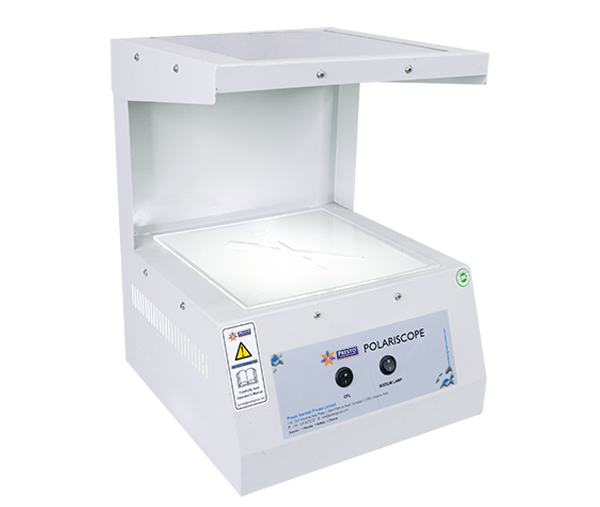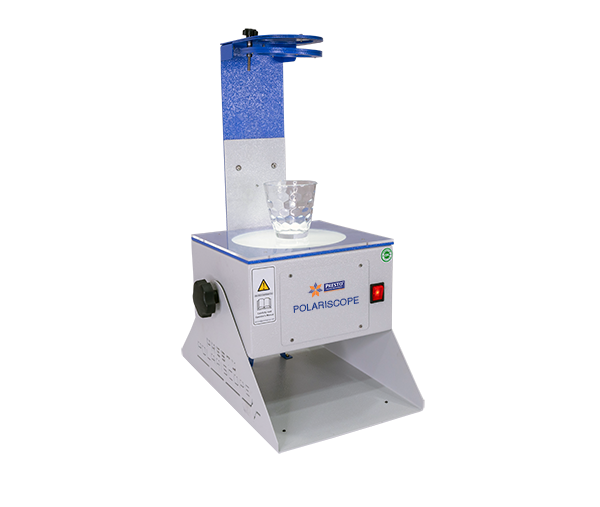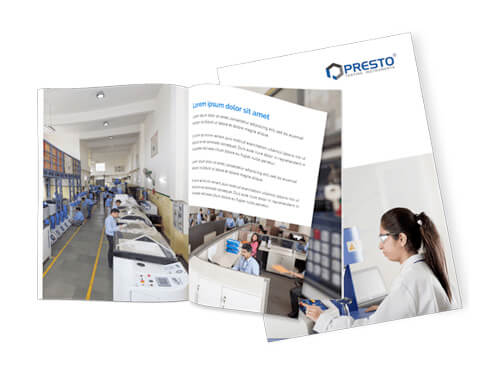Polariscope Explained | Importance, Working, and Key Applications

Vishal Malhotra-Testing Instrument Expert
27-03-2025
A polariscope is a tool used by scientists to view small, hidden objects. This complex unit, which is frequently linked to gemology, has far more applications in material science, production, and quality control. Let's take a look at Polariscope and its many uses.
What is a Polariscope?
A polariscope is a machine that uses a unique light to see how other things modify light. It usually consists of two polarizing filters, or polarizers, positioned in a particular way. The first polarizer produces polarized light, which is monitored by the second polarizer, the analyzer.

Monitoring changes in light transmission and interference patterns can yield important details regarding the material's internal structure, stress distribution, and optical properties.
Polariscope Uses
Numerous industries and scientific domains make use of the polariscope. Here are a few important uses:
Gemology:
- The most well-known use is undoubtedly the gem identity. Gems respond differently to polarized light because they are crystalline materials.
- It is employed to identify stress and irregularities that might compromise the durability of the gem.
Materials Science:
- Polariscopes are used by scientists to view the stressed areas of plastic and glass. This aids in their comprehension of the material's strength when pressed or pulled.
- The study of crystallization processes in polymers and other materials is another application.
Pharmaceuticals: It can be applied to the analysis of specific pharmaceutical compounds' crystal structures.
Geology: It is employed to examine the optical characteristics of minerals in thin rock slices.
Glass Polariscope:
Despite its apparent homogeneity, the glass may still have residual stress from production procedures. Weaknesses and possible fractures may result from this stress. Glass manufacturers can see and measure this stress with a polariscope. They can spot high-stress areas and implement corrective action by using the polariscope to observe the patterns of light and color.

Polariscope for Plastic
Plastic consists of long chains called polymers. When the plastic is stressed, it changes how the light passes through it. A special device called plastic polish can see these mild changes and shows how plastic has been emphasized. These stressed areas can be weak spots. Checking for these weak places is important to ensure that plastic parts, such as cars or medical equipment are used in, strong and safe.
Gemstone Polariscope
Because of their complex crystal structures, gemstones react differently to polarized light. Gem experts use a tool, called a polariscope, to see how the light travels through the gem. This helps them find out what kind of gem it is and whether it is real or false.
Pricing Options for Polariscopes
How much a polariscope costs depends on what kind of it is, what it can do, and who does it. The basics you can hold in your hand are very cheap. But if you want a fancy that zooms in more and has more features, it will cost a lot. Among the variables affecting the price are:
- Optical quality
- Capabilities for magnifying
- High-quality lighting systems and extra accessories.
- It's crucial to take your budget and unique requirements into account when selecting a polariscope.
FAQs:
What is a polariscope used for?
Using specialized light, a polariscope measures how clear objects alter that light. This aids in identifying issues like stress or the process by which crystals form in materials like glass, plastic, pearls, and others.
What is a polariscope used to detect?
A polariscope is used to detect:
Distribution of stress in plastics and glass
Gemstones' optical characteristics and crystal structures
Materials' inclusions and flaws
strain and anomalies in transparent materials.
Birefringence.
What is the principle of polariscope?
The reason a polariscope works is that certain objects cause special light to change. As a result, the light splits and moves at various speeds. This variation in speed creates the pattern that a polariscope can see. These patterns indicate where the material can be emphasized and how it is held inside.
How does a polariscope work?
A Polariscope Strain Viewer for Glass and Plastics operates by changing special light as it passes through certain objects. This variation in speed creates the pattern that a polariscope can see. These patterns indicate where the material can be emphasized and how it is held inside.
Can a polariscope detect defects in plastic bottles?
Indeed, a polariscope can detect cracks and other weak areas in plastic bottles. This ensures the safety of the bottles and demonstrates the areas where they were under stress during production.
Polariscope Price – Ensuring Quality in Transparent Materials
A Polariscope is a crucial instrument for assessing stress distribution in transparent materials like glass and plastics. It helps manufacturers identify defects and maintain product quality. If you are looking for the best Polariscope Price, consider factors like precision, durability, and advanced features to ensure accurate stress analysis.
Get the Best Deal on a Polariscope Today!
Call Now: +91 9210 903 903
Email Us: info@prestogroup.com
you may also like
- The Ultimate Guide to Lab Testing Equipment: Ensuring Quality with Precision Instruments
- GSM Calculator Guide: How to Measure Fabric, Paper & Plastic Weight
- What Is a Gloss Meter? Working Principle, Uses & Benefits Explained
- Applications of Tensile Testers in Plastic, Metal & Rubber Industries
- How UV Chambers Help Manufacturers Beat Sunlight and Weather Challenges
Recent News
- Paper & Packaging Testing Instruments
- Paint, Plating & Coating Testing Instruments
- Plastic & Polymer Testing Instruments
- Environmental Testing Chambers
- PET & Preform Testing Instruments
- Color Measuring Testing Instruments
- View Entire Range Instruments

Catalogue 2023
Get information about new product launches, research, innovation and endeavors at Presto.
download Free Copy
Get a Quote

